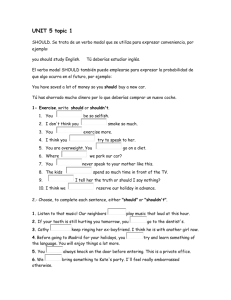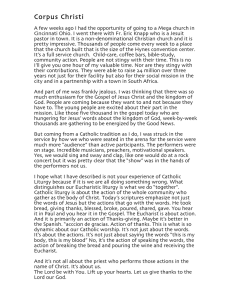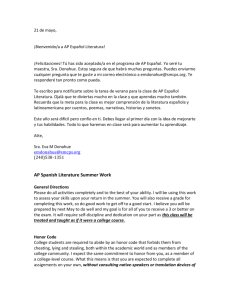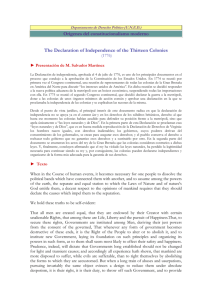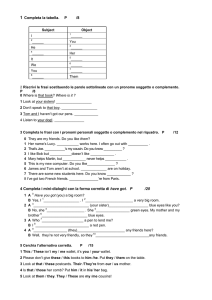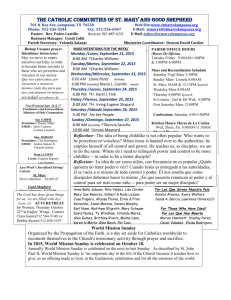After your registration is complete and your proctor has been... by Examination for Spanish 3B. This test gives you the... To the Student:
advertisement
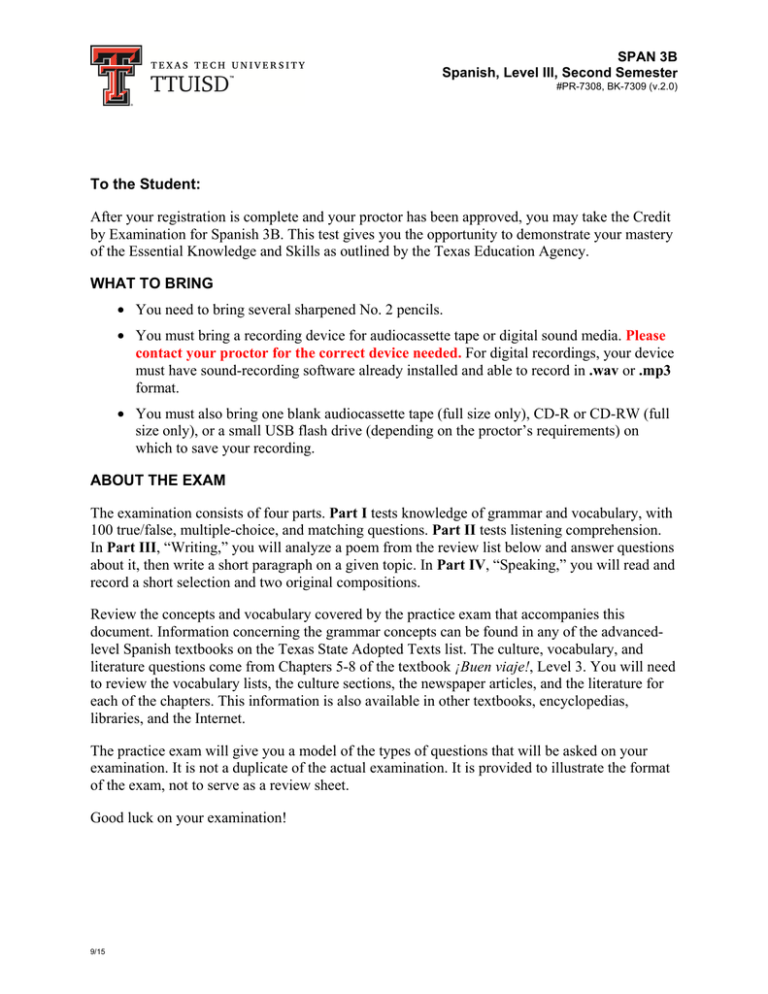
SPAN 3B Spanish, Level III, Second Semester #PR-7308, BK-7309 (v.2.0) To the Student: After your registration is complete and your proctor has been approved, you may take the Credit by Examination for Spanish 3B. This test gives you the opportunity to demonstrate your mastery of the Essential Knowledge and Skills as outlined by the Texas Education Agency. WHAT TO BRING • You need to bring several sharpened No. 2 pencils. • You must bring a recording device for audiocassette tape or digital sound media. Please contact your proctor for the correct device needed. For digital recordings, your device must have sound-recording software already installed and able to record in .wav or .mp3 format. • You must also bring one blank audiocassette tape (full size only), CD-R or CD-RW (full size only), or a small USB flash drive (depending on the proctor’s requirements) on which to save your recording. ABOUT THE EXAM The examination consists of four parts. Part I tests knowledge of grammar and vocabulary, with 100 true/false, multiple-choice, and matching questions. Part II tests listening comprehension. In Part III, “Writing,” you will analyze a poem from the review list below and answer questions about it, then write a short paragraph on a given topic. In Part IV, “Speaking,” you will read and record a short selection and two original compositions. Review the concepts and vocabulary covered by the practice exam that accompanies this document. Information concerning the grammar concepts can be found in any of the advancedlevel Spanish textbooks on the Texas State Adopted Texts list. The culture, vocabulary, and literature questions come from Chapters 5-8 of the textbook ¡Buen viaje!, Level 3. You will need to review the vocabulary lists, the culture sections, the newspaper articles, and the literature for each of the chapters. This information is also available in other textbooks, encyclopedias, libraries, and the Internet. The practice exam will give you a model of the types of questions that will be asked on your examination. It is not a duplicate of the actual examination. It is provided to illustrate the format of the exam, not to serve as a review sheet. Good luck on your examination! 9/15 Spanish 3B CBE Overview Here is a checklist of concepts that you will want to review as you prepare for the CBE. These will be covered on the CBE. Culture of México; the Caribbean nations of Cuba, Puerto Rico, and Santo Domingo; the South American countries of Venezuela and Colombia; and Hispanic communities of the United States • geography • salient points of history • capitals • foods Vocabulary • sports (windsurfing) and exercise • travel by car in Mexico • historical sites in Mexico, including Tenochtitlán, el Zócalo, Chapultepec, Guanajuato, el Museo Nacional de Antropología, and Teotihuacán • television and newscasters Grammar Instruction in these grammar concepts can be found in any of the third-year level textbooks on the Texas state adopted textbook list. The concepts included on the exam are: • present perfect tense • pluperfect (pluscuamperfecto) tense • conditional perfect tense • choosing whether to use present perfect or pluperfect verbs • choosing whether to use indicative or subjunctive mood verbs • choosing whether to use present or imperfect subjunctive mood verbs • pronouns after prepositions • comparative and superlative adjectives • use of article adjectives • adverbs with -mente • form and placement of direct object and indirect object pronouns with command forms of verbs, present participles, and infinitives • conjugation of verbs ending in -uir • conjugation of verbs ending in leer, oír, or caer in preterite tense 2 • time expressions with hace/hacía • uses of por/para Literature Know the country of origin, genre, and main theme of the works listed below, and a little about the lives of the authors. • Laura Esquivel, Como agua para chocolate • Nicolás Guillén, “Búcate plata” • Angela de Hoyos, “Tamalada” • Amado Nervo, “En paz” • Juan Asunción Silva, “Los maderos de San Juan” • Manuel Gutiérrez Nájera, “Para entonces” • José Martí, “Versos sencillos” Be sure to complete every part of the exam. We will give you as much credit as possible for each response; partial credit is given for responses that may not be totally correct but which show some knowledge and understanding of Spanish. When you leave a portion blank, we have no choice but to give zero credit. We want you to do well on this exam! The CBE will follow the design of the practice exam, but will be longer and cover more material. Good luck! We wish you the best. 3 SPAN 3B Practice Exam PART I. Culture, Grammar, and Vocabulary True/False. Indicate whether the sentence or statement is true or false. Mark “A” for true or “B” for false. (Indica si la declaración es cierta o falsa. Marca “A” para cierta o “B” para falsa.) _____ 1. Los primeros habitantes de México llegaron desde el norte durante la «Edad de Hielo». _____ 2. Los antropólogos consideran la cultura incaica como la «cultura madre» de la civilización en Mesoamérica. _____ 3. Hernán Cortés y sus soldados llegaron a la península de Yucatán en febrero de 1832. _____ 4. La receta para fondont es para hacer un caldo de lentejas. _____ 5. El mango, la papaya y el coco son frutas tropicales. _____ 6. Para la gente indígena, los españoles eran desafectos porque querían controlar las islas caribeñas. _____ 7. Se dice que el tesoro del pirata Henry Morgan está enterrado en una cueva de una caleta de San Andrés. _____ 8. El vino de Colombia es famoso. _____ 9. Los españoles fueron los primeros europeos que llegaron a muchos estados de EE.UU. _____ 10. Hoy día en EE.UU. se puede comer comida de todos los países hispanohablantes. Multiple Choice. Identify the letter of the choice that best completes the statement or answers the question. (Identifica la letra de la seleccíon que major completa la declaración o contesta la pregunta.) _____ 11. México, Canadá y Estados Unidos forman el continente A. B. C. D. norteamericano. sudamericano. europeo. africano. continued → 4 _____ 12. La persona del poema Para entonces quiere morir cuando __________ el día. A. B. C. D. empieze decline cambie comience _____ 13. Según el poema Para entonces, es mejor morir A. B. C. D. viejo. joven. por la mañana. después de comer. _____ 14. La mayoría de la población venezolana vive en la región A. B. C. D. andina. del sur. lluviosa. del este. _____ 15. Colombia tiene __________ regiones geográficas distintas. A. B. C. D. dos tres cuatro cinco _____ 16. Los judíos españoles que vinieron desde México con los conquistadores tenían que celebrar su religión A. B. C. D. abiertamente. a escondidas. en una iglesia católica. con los soldados. _____ 17. Los puertorriqueños forman el mayor grupo latino de la ciudad de A. B. C. D. Nueva York. Chicago. Atlanta. Houston. _____ 18. Se calcula que la décima parte de la población de __________ escapó a EE.UU. durante los conflictos armados en Centroamérica. A. B. C. D. Bolivia El Salvador México Nicaragua 5 Matching: Vocabulary Parea. _____ 19. buen juicio, prudencia, circunspección A. el rostro _____ 20. la cara B. fallecer _____ 21. morir C. la masa _____ 22. una hierba fragante D. la cordura _____ 23. la mezcla de harina, agua y huevos que se usa para hacer pan y otras comidas E. el romero Multiple Choice. Identify the letter of the choice that best completes the statement or answers the question. (Identifica la letra de la seleccíon que major completa la declaración o contesta la pregunta.) Completa la declaración con el pluscuamperfecto del verbo en paréntesis. _____ 24. Nadie nos __________ nada. (hacer) A. B. C. D. ha hecho hemos hecho había hecho había hecho _____ 25. Y nosotros no __________ a nadie. (escribir) A. B. C. D. escribimos habíamos escrito habíamos escritos nos había escrito Contesta con el condicional perfecto. Selecciona la respuesta correcta. _____ 26. ¿Habló Marta? Sí, pero yo no A. B. C. D. hablé. había hablado. habría hablado. he hablado. continued → 6 _____ 27. ¿Compraron ellos la casa vieja? Sí, pero ella no la A. B. C. D. habría comprado. compró. habrá comprado. habrías comprado. Completa la declaración con la forma correcta del verbo. _____ 28. Ellos buscan una enfermera que __________ poner inyecciones. A. sabe B. sepa _____ 29. Ella quiere un trabajo que __________ bastante. A. paga B. pague _____ 30. Y María también habría ido si __________ un vestido nuevo. A. B. C. D. habría tenido tenía hubiera tenido había tenido Completa la declaración con la palabra correcta. _____ 31. Rafael tiene tan buenas notas como A. tú. B. ti. _____ 32. Ricardo es el __________ jugador de la escuela. A. más bueno B. mejor _____ 33. Pero Diego es el __________ de todos. A. malo B. peor continued → 7 Completa la declaración con la palabra necesaria. Marca con – si no se necesita una palabra. _____ 34. Allí está __________ doctor Canales. A. el B. la C. – _____ 35. El señor Canales es __________ ingeniero. A. el B. la C. – Para las siguientes preguntas, escoge la respuesta que está escrita correctamente. _____ 36. ¿Quieres comprar estos zapatos nuevos, Carolina? A. B. C. D. Sí, quiero los comprar. Sí, quiérolos comprar. Sí, quiero comprarlos. Sí, cómprolos. _____ 37. ¿Están pidiendo las señoritas la cuenta al mesero? A. B. C. D. Sí, están pidiéndolela. Sí, están pidiéndosela. Sí, están se la pidiendo. Sí, se están pidiéndola. _____ 38. El me ayuda con la tarea y yo lo ayudo a él con la tarea. Nosotros __________ con la tarea. A. B. C. D. se ayudamos se auydo nos ayudan nos ayudamos _____ 39. Evita escribió a su amiga Daniela y Daniela escribió a Evita. Ellas A. B. C. D. la escribieron. las escribieron. se escribieron. nos escribieron. continued → 8 Completa cada oración usando el presente perfect o el pluscuamperfecto del subjuntivo. _____ 40. Me sorprende que el gobierno no __________ dinero a los programas educativos. A. haya dado B. hubiera dado Completa cada declaración con la forma apropiada del adverbio. _____ 41. Elena siempre trabaja A. B. C. D. rápidmente. rápidamente. rápidomente. rápido. Completa la declaración con la forma correcta del verbo. _____ 42. Me hermano menor __________ al lago el verano pasado. A. B. C. D. se cayó se caió se cae se estaba cayendo _____ 43. Yo siempre __________ la papaya por la piña cuando pido una ensalada de fruta. A. B. C. D. sustituyo sustito sustituo sustituyó Completa la declaración con por o para. _____ 44. Yo tengo que comprar un regalo __________ mi hermano. Es su cumpleaños. A. por B. para continued → 9 _____ 45. Durante la fiesta se nos agotó la comida, así que mandamos a Julia __________ más pizzas. A. por B. para Multiple Choice. For each statement about the paragraph below, mark sí if the statement is accurate or no if it is not accurate. (Opción Múltiple. Para cada declaración sobre el párrafo abajo, marca sí si la declaración es exacta o no si no es exacta.) El poeta, José Hierro José Hierro del Real nació en Madrid el 3 de abril de 1922, pero pasó gran parte de su vida en Cantabria. Después de la Guerra Civil española fue hecho preso político y pasó unos cinco años en prisión. Después de ser puesto en libertad, Hierro se dedicó a escribir y a pintar. La España que él encontró al salir de la prisión era pobre y devastada. Los españoles emigraban a otras partes de Europa y a América para ganarse la vida. José Hierro ganó muchos premios literarios. Murió en 2002. _____ 46. José Hierro nació y pasó toda su vida en Madrid. A. sí B. no _____ 47. Después de la Guerra Civil española él fue preso político. A. sí B. no _____ 48. Estuvo preso por veinte años. A. sí B. no _____ 49. La España que encontró Hierro después de la guerra era muy próspera. A. sí B. no _____ 50. Después de la guerra muchos españoles tuvieron que emigrar. A. sí B. no 10 PART II: Listening Comprehension In the listening part of the exam, you will listen to the Spanish recording that comes with your test and complete activities following the instructions given. PART III: Writing A. You will read and analyze one of the poems from the list above and answer questions. B. You will write a short paragraph in which you express your opinion on one of the following topics. The specific topic will be given on the exam. • sports and the importance of warming up before exercising • contributions made by immigrant groups to the United States • positive and negative consequences of rising immigration in the U.S. • necessity and worth of education programs in prisons and jails PART IV: Speaking In the speaking part of the exam, you will make a recording of your spoken Spanish on your own recording medium (see “What to Bring” on the first page of this document). • You will read and record a selection which will be provided with your exam. • You will read and record the poem from Part III. • You will create and record a monologue of about six sentences on a given topic. 11 SPAN 3B Practice Exam Answer Key 1. A 18. B 35. A 2. B 19. D 36. C 3. B 20. A 37. B 4. B 21. B 38. D 5. A 22. E 39. C 6. A 23. C 40. A 7. A 24. C 41. B 8. B 25. B 42. A 9. A 26. C 43. A 10. A 27. A 44. B 11. A 28. B 45. A 12. B 29. B 46. B 13. B 30. C 47. A 14. A 31. A 48. B 15. C 32. B 49. B 16. B 33. B 50. A 17. A 34. A 12 Texas Essential Knowledge and Skills SPAN 3 – Spanish, Level III Languages Other Than English (High School) §114.21. Implementation of Texas Essential Knowledge and Skills for Languages Other Than English, High School. The provisions of this subchapter shall supersede §75.62(a)-(g) and (k)-(o) of this title (relating to Other Languages) beginning September 1, 1998. (a) General requirements. (1) Levels I and II - Novice progress checkpoint can be offered in elementary, middle, or high school. At the high school level, students are awarded one unit of credit per level for successful completion of the level. (2) Using age-appropriate activities, students develop the ability to perform the tasks of the novice language learner. The novice language learner, when dealing with familiar topics, should: (A) understand short utterances when listening and respond orally with learned material; (B) produce learned words, phrases, and sentences when speaking and writing; (C) detect main ideas in familiar material when listening and reading; (D) make lists, copy accurately, and write from dictation; (E) recognize the importance in communication to know about the culture; and (F) recognize the importance of acquiring accuracy of expression by knowing the components of language, including grammar. (3) Students of classical languages use the skills of listening, speaking, and writing to reinforce the skill of reading. (b) Introduction. (1) Acquiring another language incorporates communication skills such as listening, speaking, reading, writing, viewing, and showing. Students develop these communication skills by using knowledge of the language, including grammar, and culture, communica (2) Students of languages other than English gain the knowledge to understand cultural practices (what people do) and products (what people create) and to increase their understanding of other cultures as well as to interact with members of those cultures (c) Knowledge and skills. (1) Communication. The student communicates in a language other than English using the skills of listening, speaking, reading, and writing. The student is expected to: (A) engage in oral and written exchanges of learned material to socialize and to provide and obtain information; (B) demonstrate understanding of simple, clearly spoken, and written language such as simple stories, high-frequency commands, and brief instructions when dealing with familiar topics; and (C) present information using familiar words, phrases, and sentences to listeners and readers. (2) Cultures. The student gains knowledge and understanding of other cultures. The student is expected to: (A) demonstrate an understanding of the practices (what people do) and how they are related to the perspectives (how people perceive things) of the cultures studied; and (B) demonstrate an understanding of the products (what people create) and how they are related to the perspectives (how people perceive things) of the cultures studied. (3) Connections. The student uses the language to make connections with other subject areas and to acquire information. The student is expected to: (A) use resources (that may include technology) in the language and cultures being studied to gain access to information; and (B) use the language to obtain, reinforce, or expand knowledge of other subject areas. (4) Comparisons. The student develops insight into the nature of language and culture by comparing the student's own language and culture to another. The student is expected to: (A) demonstrate an understanding of the nature of language through comparisons of the student's own language and the language studied; (B) demonstrate an understanding of the concept of culture through comparisons of the student's own culture and the cultures studied; and (C) demonstrate an understanding of the influence of one language and culture on another. 13 (5) Communities. The student participates in communities at home and around the world by using languages other than English. The student is expected to: (A) use the language both within and beyond the school setting through activities such as participating in cultural events and using technology to communicate; and (B) show evidence of becoming a lifelong learner by using the language for personal enrichment and career development. Source: The provisions of this §114.22 adopted to be effective September 1, 1998, 22 TexReg 4930. 14

